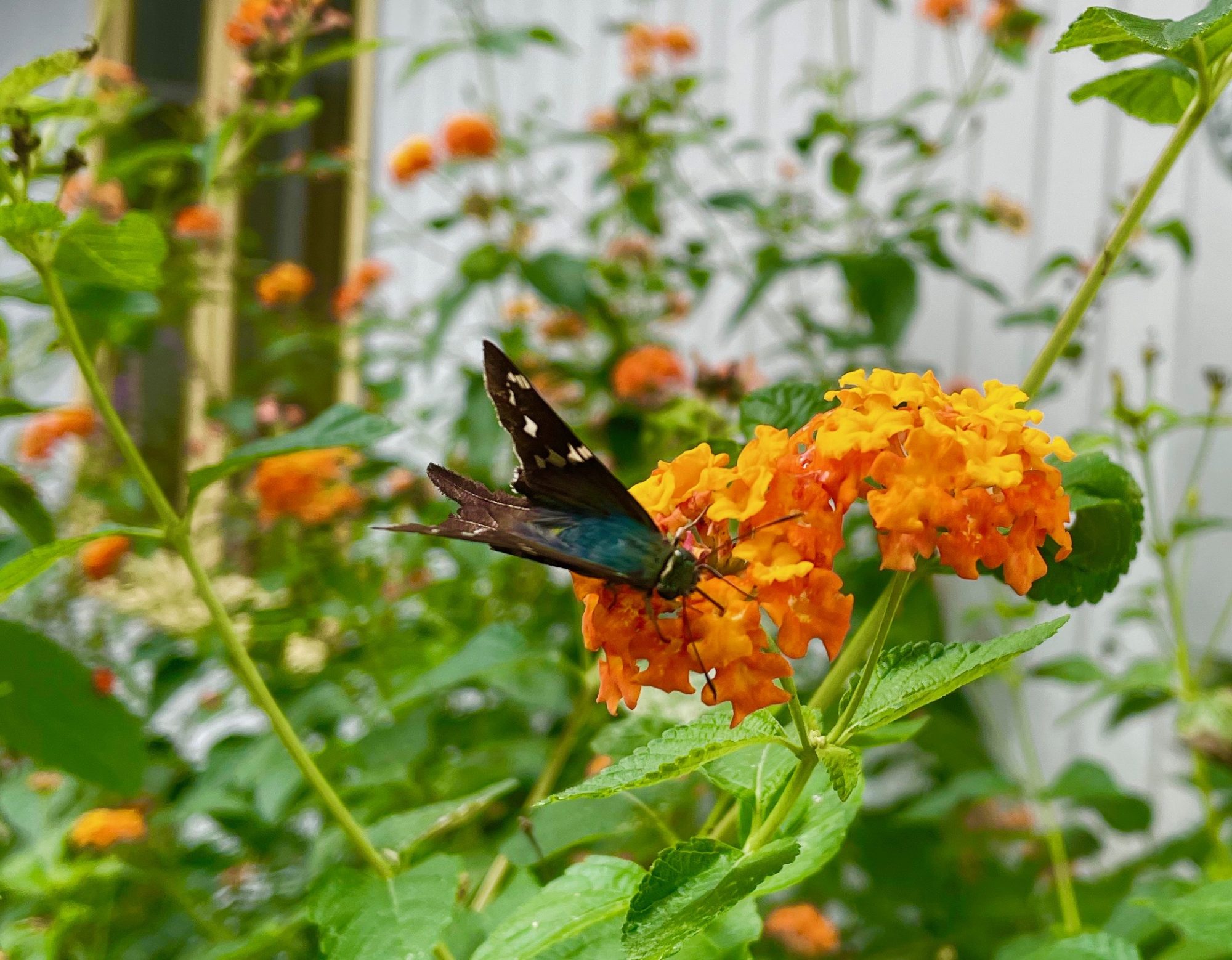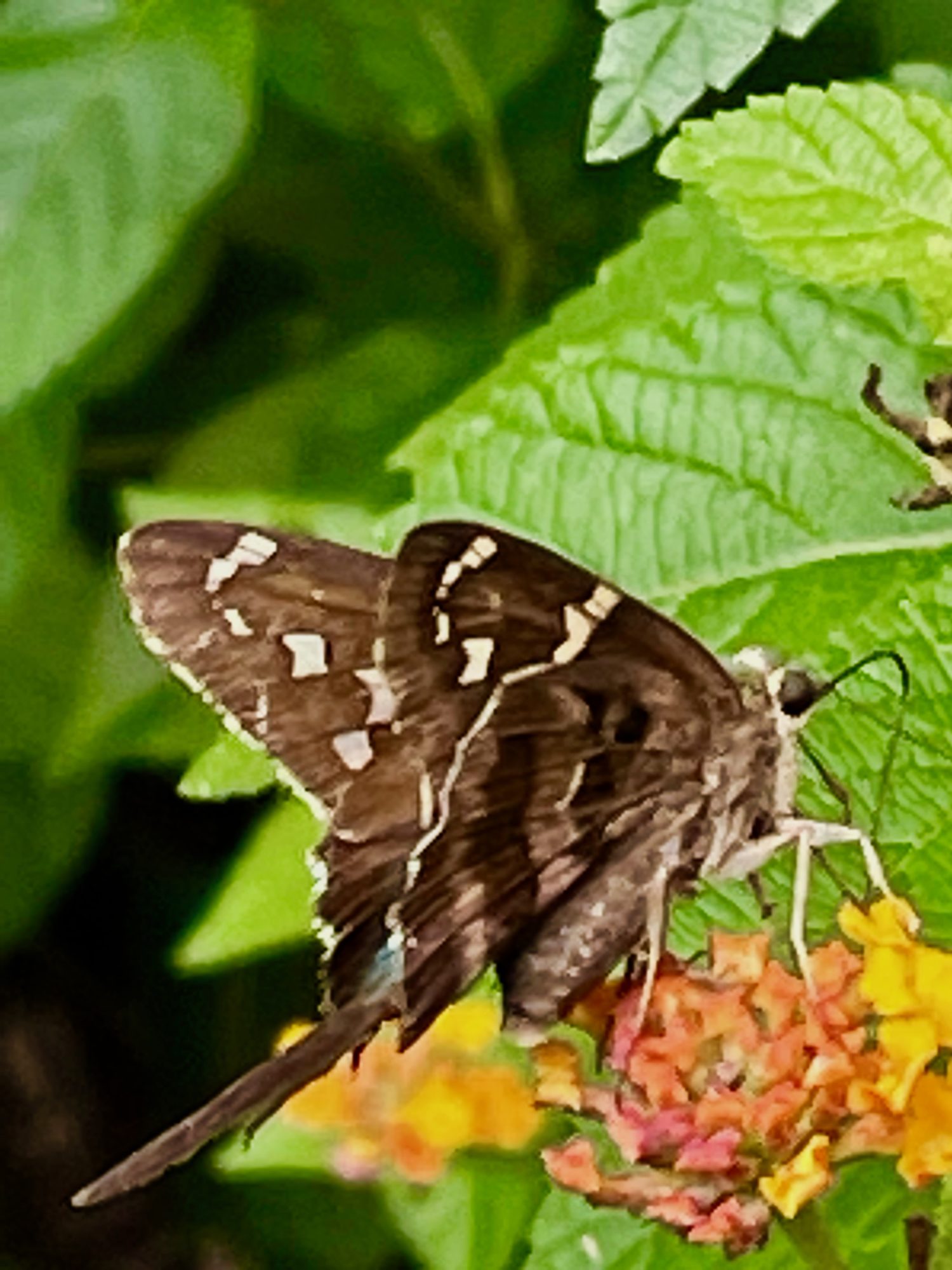
By Mary Reid Barrow
You are out of here, I said the other day to Miss Huff, the hardy lantana with all her yellow-orange blooms. This fall, I swear, will be your last.
You have taken over a fourth of my little garden. Every year, you get as big as a Volkswagen and you bully your way into and over your neighbors and block the garden path. I’ve had it with you.
Not so fast, Miss Huff said, nodding a branch of blooms toward me. I have something to show you.
And in the midst of my ranting, what to my surprise should I see but a long-tailed skipper, skipping over Miss Huff’s many flowers, This beautiful little skipper, true to its name, is instantly recognizable by its long tails, while most skippers are really hard to ID.
Touché, Miss Huff!
When the long-tailed slowed down, I could look closely and see its very special feature, a subtle iridescent blue-green back, a color that no other skipper has that I know of.
The beautiful coloring also blends into the lower part of its upper wings. The rest of the brownish wings have white markings, as a lot of other skipper wings have.
Skippers are in the same family as butterflies and moths. Since they are day fliers, they often are referred to as butterflies.
Small and mostly yellow to brown, skippers often have great big eyes. The tips of their antennae are hook shaped. Butterfly antennae have little clubs at the ends and moth antenna are feathered for the most part.

The flight of the long tailed skipper might make you sit and take notice. Its long tails are almost vertical. It looked like a little like a flying top as it made is way around the lantana, who looked as smug as she could be.
Farmers are not as appreciative of long-tailed skippers as I am They bring the beauty down a peg and call it a bean leaf roller, because long-tailed larvae feast on the leaves of various bean species and then roll up in a leaf to pupate.
But it causes Miss Huff no such problems. In fact Miss Huff, you aren’t even a native nor are you a host plant for anything that I know of.
You just have that darn “Je ne sais quoi” quality in your nectar that brings the insects in and makes it hard to give you up. This year you bought in a winner for me. So maybe next year, I will at least put you on a good diet.
Do you have a favorite tree or plant with a story to tell? What relationships have you observed between plants and critters? Who eats whom? Who has babies where? Send an email to maryreid@lrnow.org